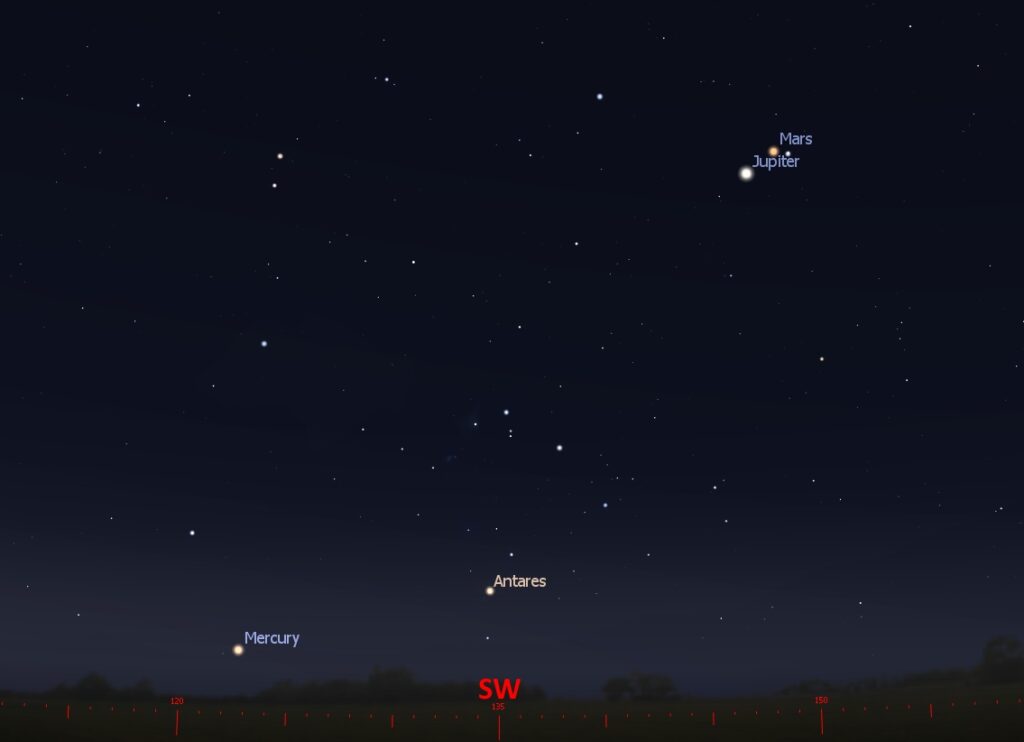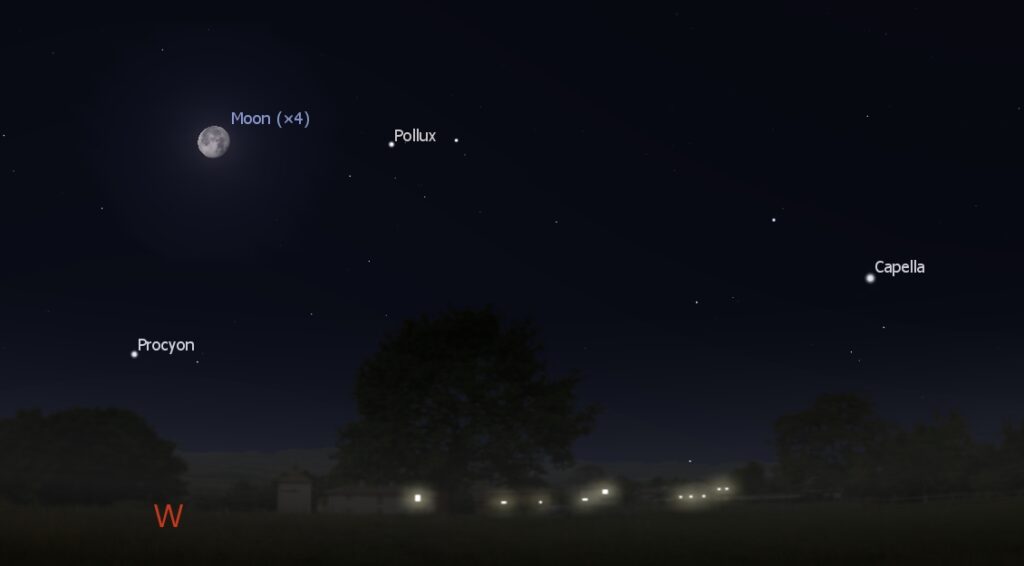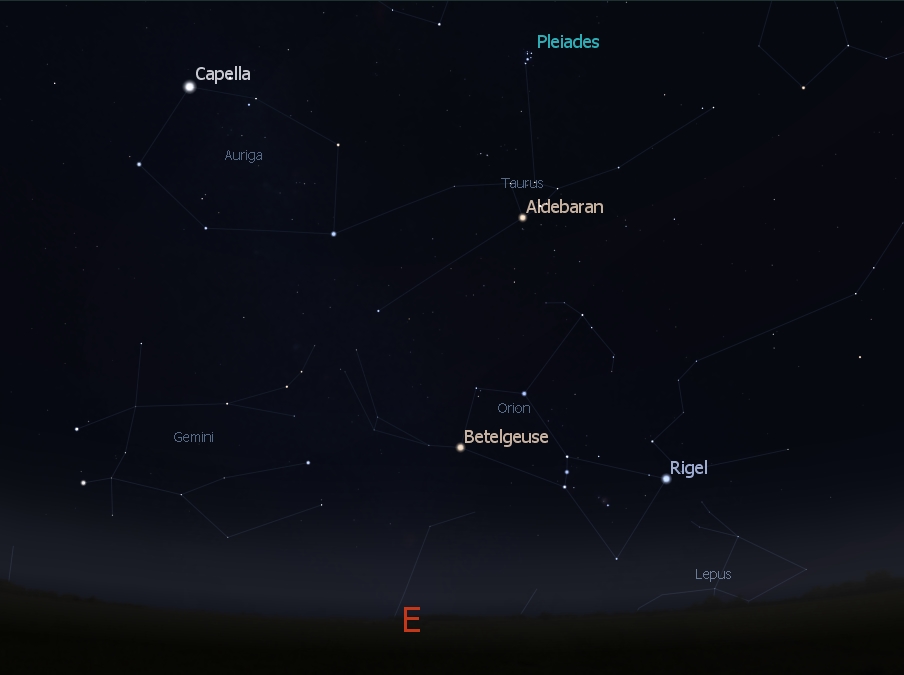Mercury rises shortly before the dawn, appearing low in the southeastern sky. Jupiter and Mars are only 1° 38′ apart – practically on top of each other! 1° is about the width of your little finger held at arm’s length.
Compare the image above with the solar system image at the bottom of this post to see how Jupiter and Mars line up in relation to the Earth.
A waning gibbous Moon, one day past full sets in the west with the dawn.
After sunset in the east, Taurus and the Pleiades are already high in the sky, and Orion is just above the horizon. Orion is visible most of the night, setting in the west around 4:00 AM.
The Sun
The Sun has no spots, and has been completely devoid of sunspots for 6 days now. The solar wind speed is 377 km/sec, with a density of 6 protons/cm3 – lower speeds, and slightly more dense than in my last In the Sky post.
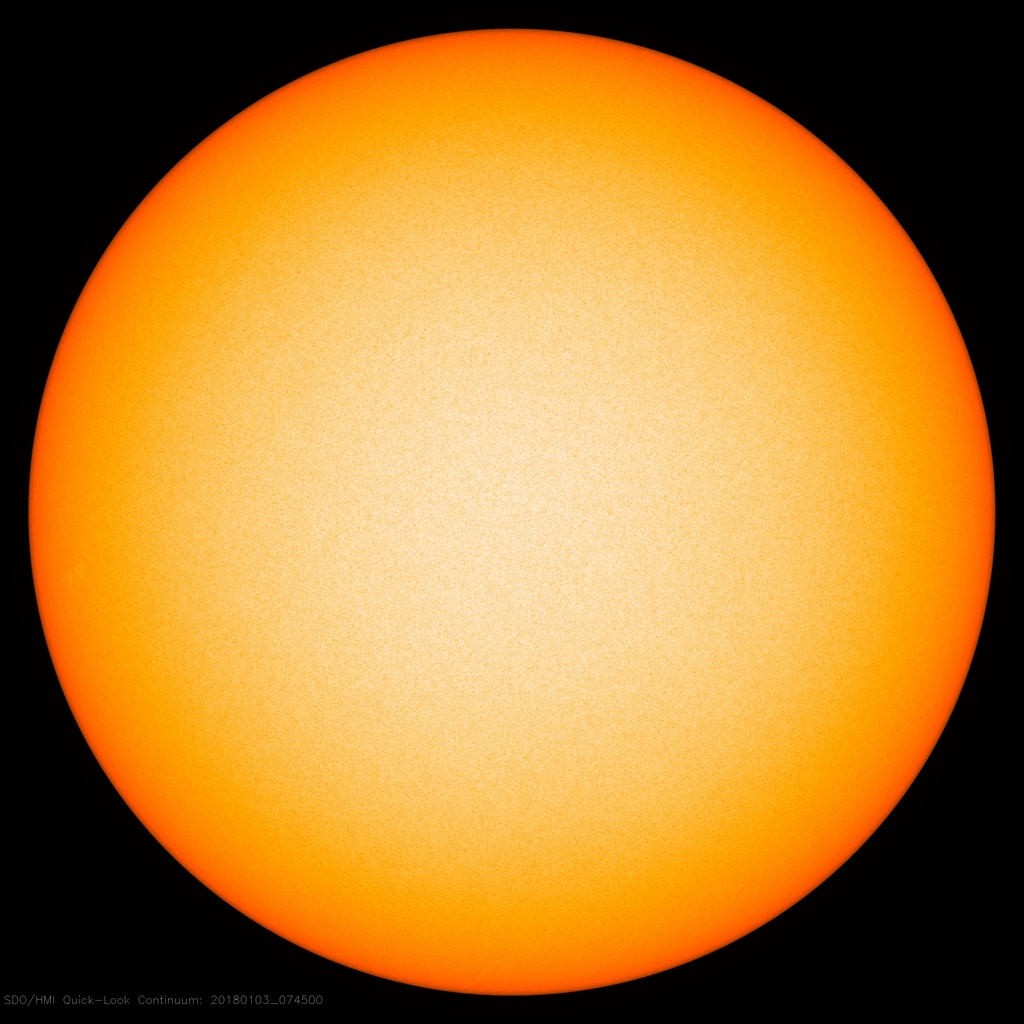 The Sun – Jan. 3, 2018 – Helioseismic and Magnetic Imager (HMI). Image courtesy of NASA/SDO and the AIA, EVE, and HMI science teams.
The Sun – Jan. 3, 2018 – Helioseismic and Magnetic Imager (HMI). Image courtesy of NASA/SDO and the AIA, EVE, and HMI science teams.The Sun seen in 304 angstroms reveals several small prominences around its limb.
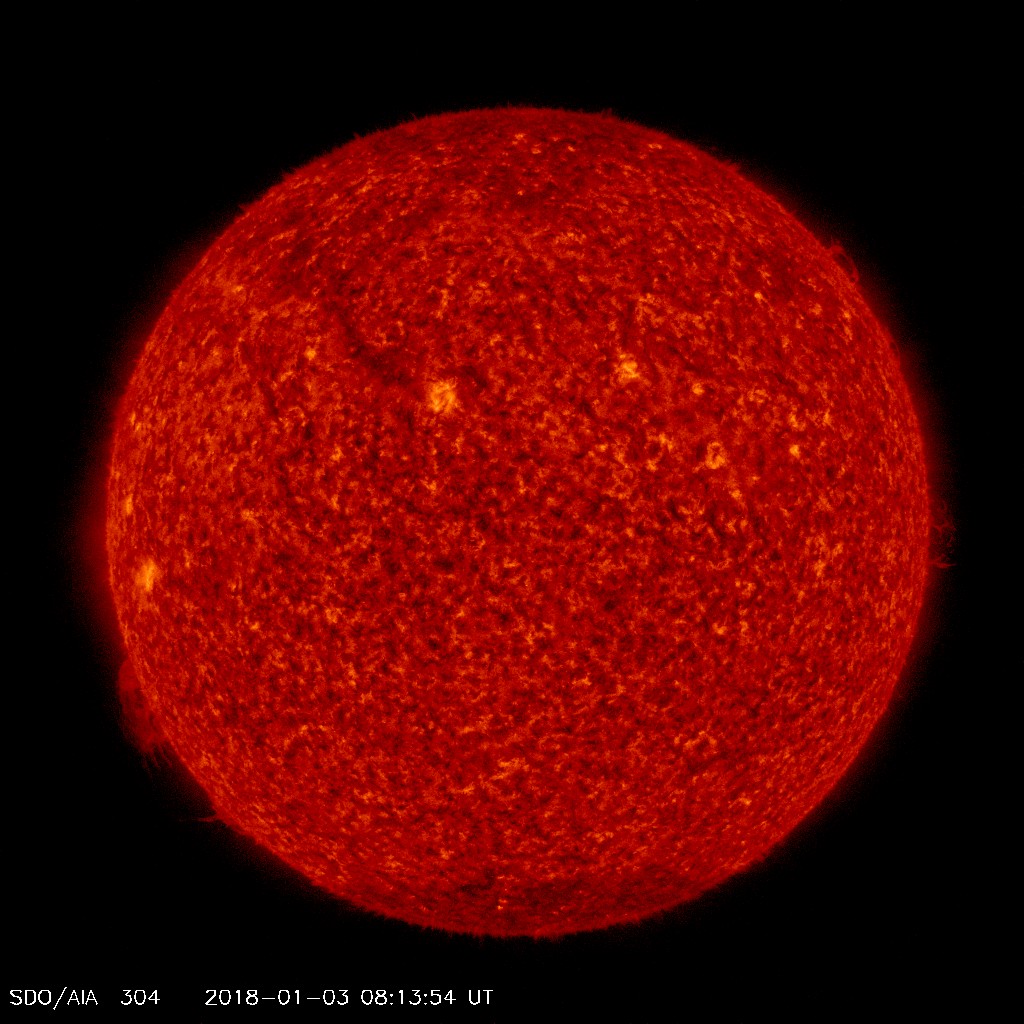 The Sun in 304 angstroms – Jan. 3, 2018 – Atmospheric Imaging Assembly (AIA). Image courtesy of NASA/SDO and the AIA, EVE, and HMI science teams.
The Sun in 304 angstroms – Jan. 3, 2018 – Atmospheric Imaging Assembly (AIA). Image courtesy of NASA/SDO and the AIA, EVE, and HMI science teams.You can view the Sun in multiple frequencies, in near real-time here: SDO-The Sun Now
The Solar System
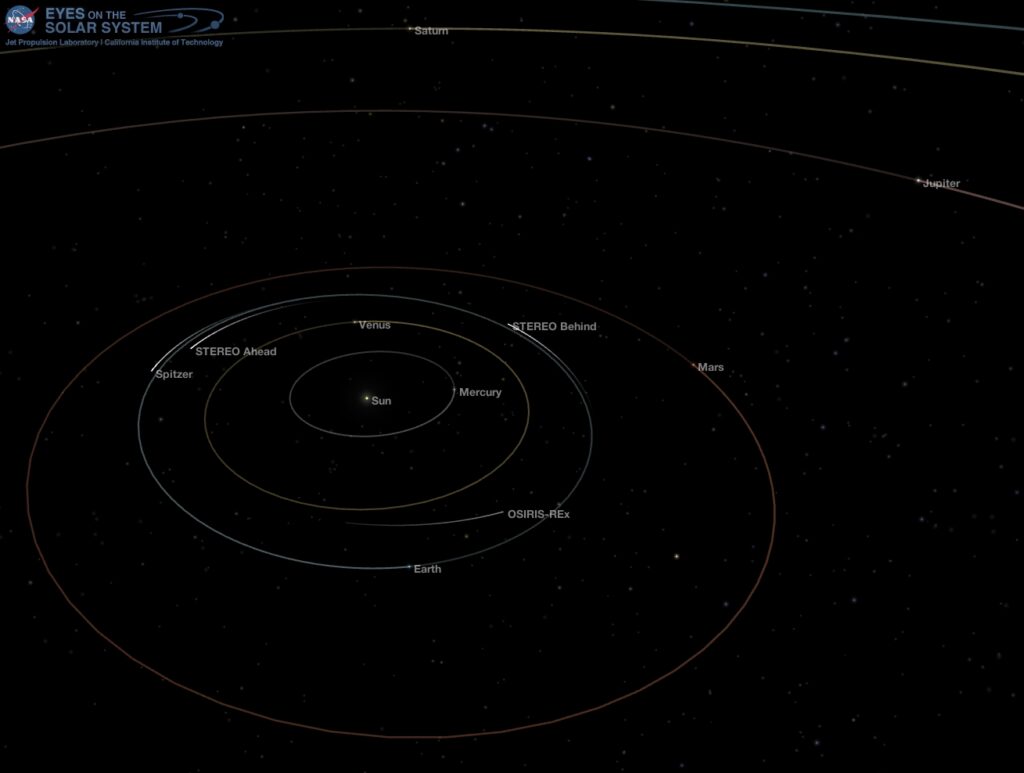 Position of the planets in the inner solar system, Jan. 3, 2018. Credit: NASA Eyes on the Solar System / Bob Trembley.
Position of the planets in the inner solar system, Jan. 3, 2018. Credit: NASA Eyes on the Solar System / Bob Trembley.This is the position of the planets in the inner and outer solar system simulated using NASA Eyes on the Solar System.
Apps used for this post:
Stellarium: a free open source planetarium app for PC/MAC/Linux.
NASA Eyes on the Solar System: an immersive 3D solar system and space mission app – free for the PC /MAC.
